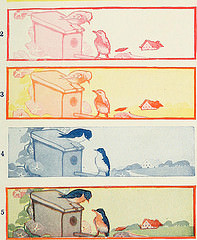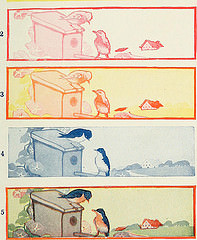The Amazing Physics of Archery

However, there is a lot more physics going on that is unseen. The arrow does anything but go straight to the target.
When an arrow is released, it produces a great kinetic energy that causes the arrow to bend right, than left, than right, than left again etc. until it hits the target. All this is done in a fraction of a second. First, when the arrow is released, the string moves to the left causing the arrow to bend to the right, than the string moves back to the right, (center of the bow), causing the arrow to bend left. This is done even before the arrow passes the bow riser. As the arrow moves ahead, this left right pattern continues a little less each time until it hits the target. If you’re a left hand shooter, the opposite pattern happens.
The spine, or stiffness of the arrow plays a major role in determining how much it will bend. If the spine is too weak, it will cause the arrow to bend excessively. This cuts down on arrow speed and penetration, and your shot won’t be as powerful as it could have been. If the spine is too strong, the arrow will not bend, (vibrate), properly and this will cut down on accuracy. The release force of the bow plays a major role in determining what spine strength you should use.
Another important factor in determining accuracy is the fletchings. Your fletchings or feathers should be in good condition.
There is a lot of debate on the proper way to shoot a bow and how to aim. To be accurate, you must sight down the arrow shaft and not the center of the bow. There is no two ways about it. You can use mechanical things such as peep sights, distance measuring devices, etc., but this is all designed to help you sight down the arrow shaft and determine the gravitational trajectory of the shot. Expert archers seldom use mechanical devices. If you’re a right handed shooter, when you sight down the arrow shaft, the median center of the bow will automatically be offset a certain distance to the right of target center. The opposite is true if you are a lefty. This is because your arrow is skewed, (angled) from bow center where the arrow is nocked on the string, to where it butts against the side of the bow or arrow shelf. Despite the skew, and all the arrow bending going on, it will travel along a path as determined by sighting from the rear to the front of the arrow shaft in direct line with the intended target.
